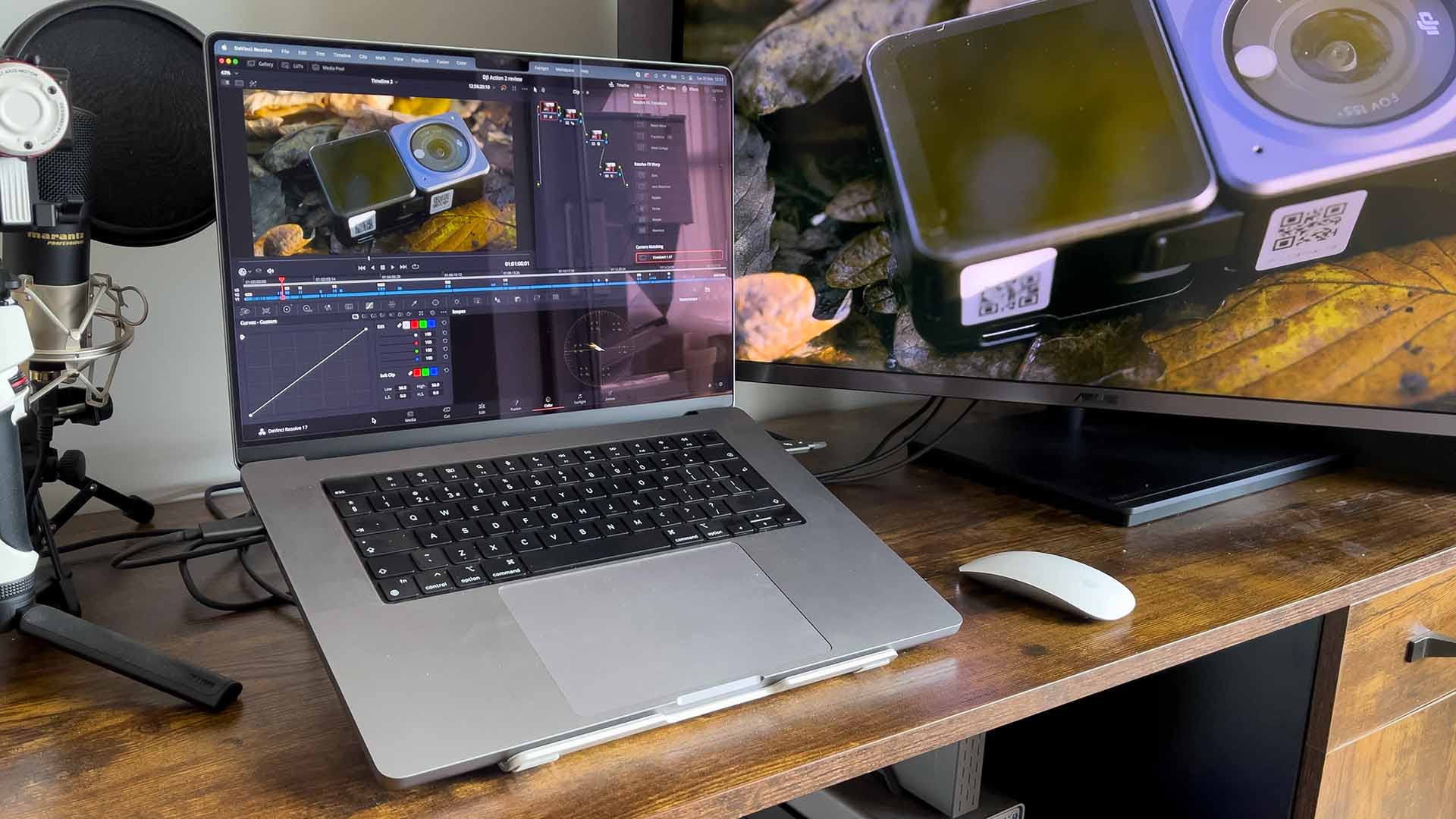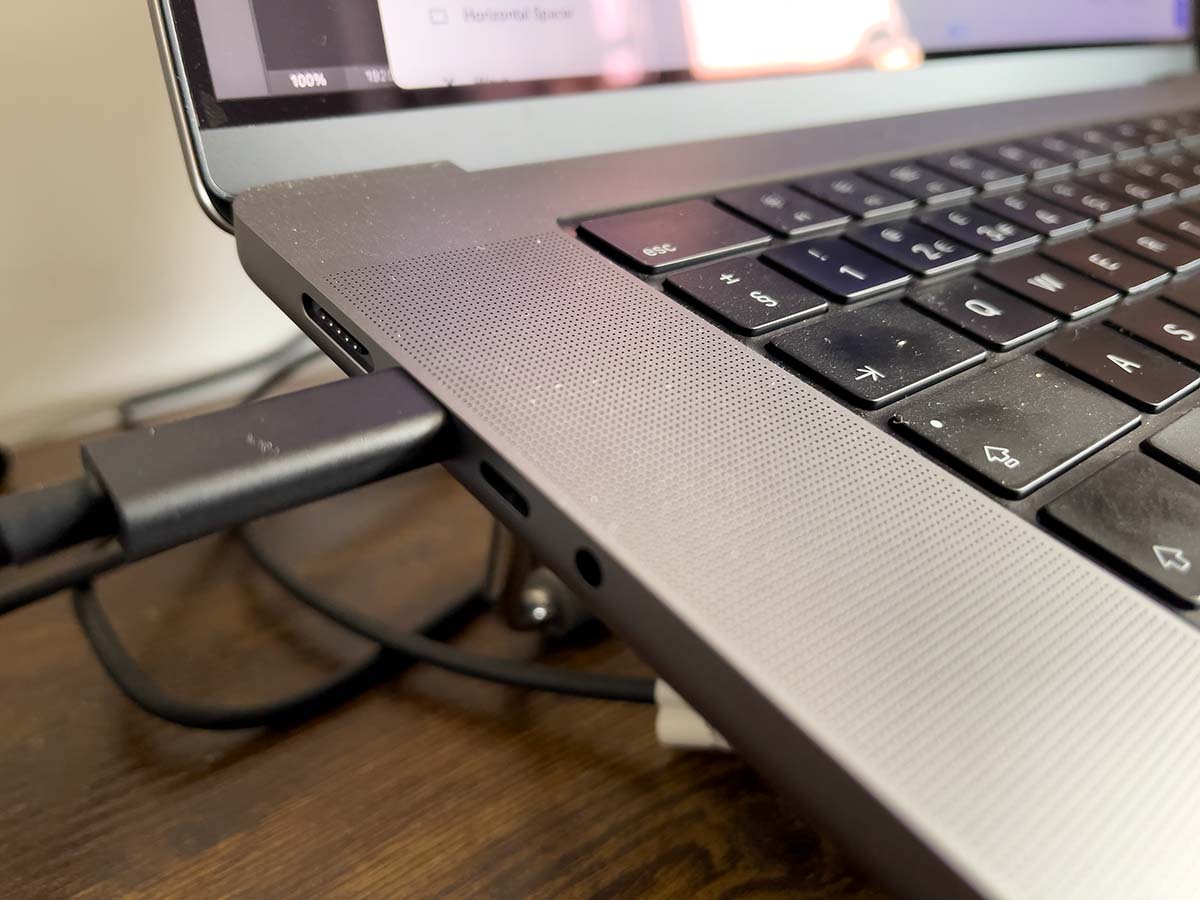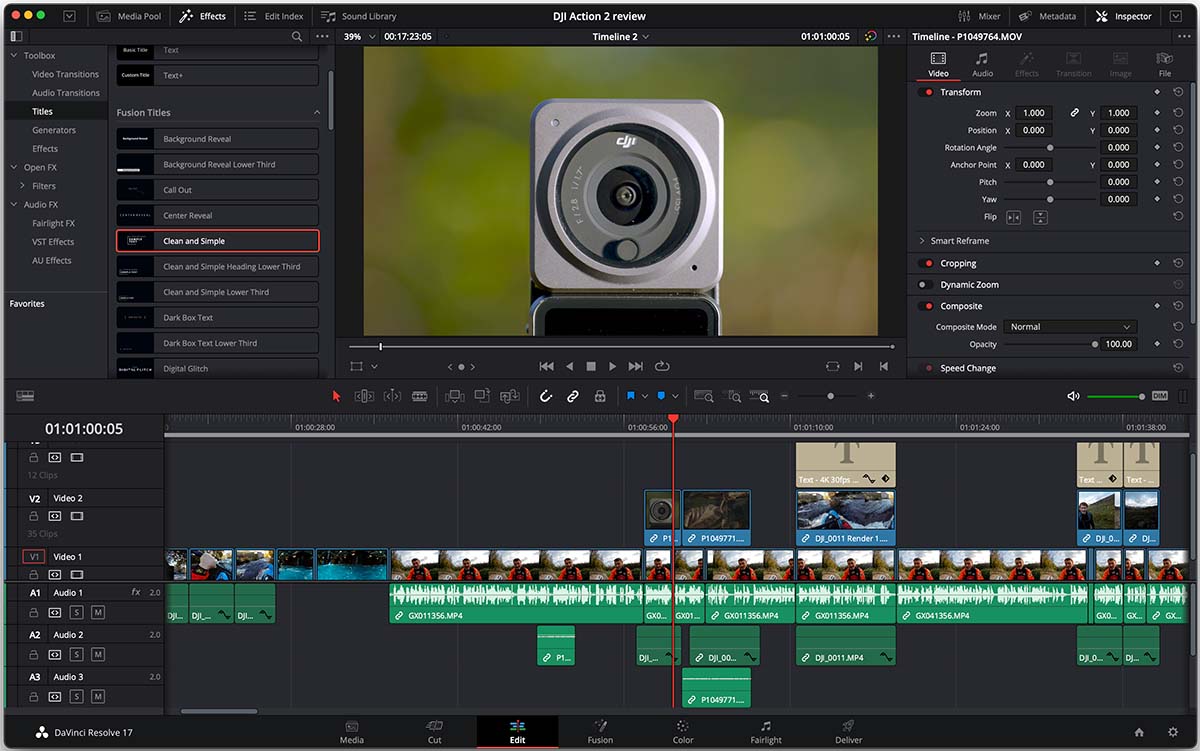
I recently bought an M1 Max MacBook Pro to replace my ageing Intel machine. What's the experience been like? Here's my review and opinion, benchmark and silly YouTuber review thumbnail free (sort of).
To begin with, a disclaimer. If you want head to head benchmark results, you've come to the wrong place. For this review I want to take a more generalised view of what the machine is like to own and use.
I bought my 32GB 16-inch M1 Max MacBook Pro to replace my 2016 Intel i9 machine, which had been chugging away doing its best. For day-to-day work editing RedShark, the Intel MacBook was fine, although its battery was less than stellar after having been plugged in for 90% of the time it was used. When I first bought it, it was a revelation for me with the footage it could handle, but now, five years on, it was struggling. Interestingly I had actually bought it originally as a stopgap anyway, but just ended up using it as my main machine.
I only had to breathe and the fan would come on at full speed, making voiceovers for videos impossible, or at least incredibly difficult. I needed something that was still portable for taking away with me, but that could handle editing footage from cameras today, and tomorrow. Although I don't own a ton of cameras, I still have to test them. Regardless of whether Apple bring out an M2 Max in a week's time, all I needed the new machine to do was handle things generally well and last a few years.
Has my experience been the same as all those YouTubers with ridiculous, wide open mouthed 'surprised' looking, hands in the air, video thumbnails? Let's find out, and I promise you there'll be no silly click-bait facial expressions from me.

Speakers, ports, and dust from a kitchen refitting. I did say this was a real world review.
M1 Max MacBook Pro overview
I covered the way the computer is packaged, and its build quality in my 'unboxing' article - hint: it's rather more than an unboxing article, if you despise that sort of thing.
The keyboard has been infinitely better in feel than the old butterfly one I used to have. Surprisingly I never really had any issues with the keyboard on my old machine; at least not fixable ones. Anyone would think that complaints on the internet weren't representative of the majority, or something! But while I didn't really have any huge issues with it, the new keyboard has a much more positive, reassuring feel to it.
The Touch ID works very well, as it always has, and the only gripe I have is that the arrow keys are too small and a bit finicky to operate, particularly in a hurry. At the very least I'd like the left and right arrows to be full height. I've gone to press the space in-between keys far too many times.
The trackpad is excellent, so much better than any Windows based laptop I have used. It's super large and can deal with all sorts of multi-finger gestures. Quite why other manufacturers fail to do this bit right fails me. But there you go. Haptic feedback confirms presses (the trackpad itself doesn't actually move - It just feels like it does from the haptics).
The Mini LED display is also superb. I'm not going to give you colour accuracy results here, but it is extremely good. It's a gloss finish, but unlike other gloss style displays, glare simply isn't an issue. This means that along with being extremely pleasant to use, colours are just better on it than other displays that look more like mirrors.
The refresh rate goes up to 120Hz, so it's also super snappy and responsive in applications that support the ProMotion functionality. It's also super bright with a maximum of 1600nits and a sustained brightness of 1000 nits possible. It's also 10-bit.
Is it fast?
I think where speed is concerned we need to place some ground rules for debate on this. Many of the tests you see on YouTube or elsewhere come from the premise that Apple has promised that these are the fastest machines ever. So of course there are comparisons with the absolute highest end Windows based mobile workstations. Unsurprisingly in some tests even the M1 Max loses out sometimes. Cue an aghast surprised face with a huge arrow pointing somewhere on a YouTuber's video thumbnail.
The reality is that what Apple promised was a very high power per Watt ratio. In other words the machine will be very powerful, but the key thing is that as a mobile laptop it can offer that power whilst being very frugal with the battery draw. Even more importantly it promised there would be no drop in performance when running the machine on battery alone. Something that cannot be said for the vast majority of Windows based systems. Although that may well change very soon with some of the newer tech that's on the horizon.
But it is an important distinction to make, and one that people who are on the move will appreciate, as well as those who want a powerful machine at home and who don't want huge energy bills. Given recent price increases, that's something that shouldn't be sniffed at!
Anyway, most of you with any interest in this will have seen benchmarks galore, but what have I found in general real world use?

Image: Shutterstock.
Davinci Resolve
I've been using the latest Resolve 17.4.2 release, and yes, things run far faster than they ever did on my old Intel machine, but with a few caveats and gotchas mixed in.
General scrubbing and moving around the timeline is super-quick most of the time, even with tricky 4K HEVC footage. Interestingly, and contrary to one respected tester, I found that I could edit and play back Canon raw from the EOS C500 II with no issues. It played back fine, and at full frame-rate. I had to download the footage to test this, but it was an original, untouched file.
Generally, because things are so fast, for a vast majority of codecs you will rarely feel the need to generate proxy files or optimised media, both of which eat up storage. If things do get bogged down, then knocking the playback resolution down to half, or setting the timeline to 1080p until you're ready to export will make things fly. But likely you'll very rarely need to do this, except for some of the things I mention below.
With 4K HEVC footage I could apply temporal noise reduction set to 3 frames, and 20% reduction, along with two other correction nodes, one for general colour, and the other with some sharpening, and it would play juuuust below the target frame rate. Reducing the playback to half resolution played it with no problems at all. Generally noise reduction is a tough test and you'd normally leave it until last anyway. On final rendering, the render frame rate dropped to between 14-16fps encoding these sections to 4K H.264.
The other gotcha is with anything Fusion based. Fusion effects, even some apparently basic ones can slows things down. Sometimes it makes things stutter slightly, while at other times, depending on the effect, it makes it unplayable unless you really reduce the resolution, such as when using Fusion's lens distortion tool (not to be confused with the similarly named OFX filter).
The most recent update to Resolve apparently made Fusion run better on M1 Macs, but I think there's still some work to be done with some of the tools and effects.
So generally for editing in Resolve, the M1 Max is really nice to use, and overall editing and playback is extremely responsive. But things slow down to a degree when using even some of the apparently simple effects in the Fusion tab. The offset of this is that my old Intel machine was even slower.
Conclusion: Much faster than the old Intel machines for editing, but the Fusion element of the software still needs further speed improvements in some areas. I say this as a back seat coder. However the speed improvements elsewhere mean that you don't have to be as cautious when manipulating the video in case of slow down.

Fusion titles and effects aren't fast, even in the latest Resolve.
Final Cut Pro
This is no longer my go-to NLE since I moved to Resolve a long time ago, and despite the slowdowns I mentioned above, I will likely stick with it. That said, I do sometimes go back into FCP for the occasional project.
Unsurprisingly, being Apple software running on Apple hardware, it runs super fast. You can layer effect over effect and it just keeps asking for more. The timeline is wonderfully responsive, and you can get things done very quickly indeed. It's a shame I'm still not a fan of how colour correction is done in it, however, which is a primary reason why I still like Resolve better.
Photoshop
I'm not a Photoshop power user, but I do use it every day for basic editing, sometimes with very large images. I haven't noticed leaps and bounds performance gains in everyday tasks. Content aware tools seem faster, but not night and day. Benchmarks tell me it's 80% faster, but I'm talking about how things actually feel to use. When you get hold of a new machine like this, there's always the unrealistic expectation that everything should now be instantaneous. If something took 2 seconds to complete before, then bringing it down to 1 second is objectively faster. But the question is, unless you have the two machines, old and new, side by side, do you actually feel that difference?
Having said that, the M1 Max does handle having a lot of images open simultaneously a lot better, however, and I'm no longer waiting 10-hours for images to get sent from Lightroom to PSP for some editing tasks. In other words, the old Intel machines could still do a lot of tasks pretty well, but the real test is when you load things up on it, and take aspects like the memory resources to the maximum.
If you're processing a lot of Lightroom images, you'll notice a difference. Particularly if you need to use functions such as the spot heal tool a lot, where things could get quite bogged down on the older models.
Cool Runnings
Throughout all my playing about with the M1 Max, did it live up to its promise for cool running, and low fan noise? When exporting a 17 minute video full of noise reduction the fans did kick in, but they weren't the great loud vacuum cleaner sounds of my old machine, but much more subdued.
One of the best things is that even when you are challenging the machine with a render, you can still get on with doing other things in other software and barely notice it. On my old machine it was nigh on impossible to do a render from Resolve or to set Topaz Video Enhance AI going and then move into other software such as Safari or Photoshop to do other work, because it slowed down so much. I've noticed no such issues with the M1 Max, and as a result, if you often have a ton of apps open at the same time, one of these machines may work very well for you.
Other improvements
The fact that ports have come back, such as HDMI and the SD card slot, mean that I no longer have to have a port expansion dock permanently plugged in. Even better is that each of the three Thunderbolt 4 sockets has its own controller, rather than being shared as per the Intel models. The re-introduction of MagSafe as well means that in total you get three fully usable Thunderbolt ports rather than using them all up for charging or with card adaptors.
The full 120Hz refresh rate is supported, too, for monitors that are capable. I've had my machine hooked up to the ASUS PA32UCG monitor at the full 120Hz, and it is utterly fantastic. The display is also a lot faster at being recognised. On my old machine sometimes getting the computer to recognise that it existed at all over Thunderbolt was hit and miss after the machine had been sleeping.
I have one gripe, but it's one I'm not sure Apple has any control over. Sometimes I want to use Thunderbolt connectivity, but without the device charging or being constantly powered externally. Unfortunately there's no way to turn external Thunderbolt powering by devices off.
I had one strange experience where my LaCie One Big dock appeared to be charging my machine, but I still ran out of juice during a difficult render (the battery was already half drained when I started it). The LaCie drive didn't appear to be able to be able to give it enough power. I managed to get the MagSafe hooked up to charge it just before it powered off. However plugging in a higher powered Thunderbolt powering device such as the ASUS monitor didn't appear to take over charging duties from the LaCie drive. Only plugging in the MagSafe saved it.
It might be nice for future Thunderbolt devices to enable power delivery switching, and for Apple to offer some sort of 'preferential device' selection when it comes to charging via the ports.
Conclusions
In the main I'm extremely happy with the M1 Max MacBook Pro. Despite some of my software based grumbles above, it has made me enjoy editing again rather than coming to a session wondering if I'll be able to hear myself think. It's made doing VO easier as well due to its quietness.
Has it made me sit at my desk with my mouth open wide and my hands cupping my head like a Youtuber's Macaulay Culkin Home Alone poster lookalike pastiche with a big yellow arrow pointing at nothing in particular, and exclamation marks all over the place? Erm, no. But it is very fast for most tasks and it has made my video editing life a lot more pleasant.
I think that a lot of the best is yet to come as developers get to grips programming for the new hardware. Tasks, such as the AI tasks in Photoshop, are likely to improve. Adobe software has only really just started to get M1 specific code
No doubt in five or six years it will seem slow again in comparison to everything else on the market. But for now it is handling 4K and above footage very well indeed, even with a ton of effects on in some software, and therefore that bodes will for long term use and longevity. I can also use it out and about, and perform computationally heavy tasks without wondering if the battery will last more than five minutes. No matter where I take it, I'll pretty much have workstation performance in a bag.
Yes, it was pricey. I traded in my old MacBook for it and got £400 back. Yes, I could have sold it myself and made a lot more, but my experience of selling used electronics goods in the past meant that I decided to prioritise my sanity and mental wellbeing. And at least I know it'll get properly recycled in some way, whether that's a new user or melted down to make a new one.
Tags: Technology computing Editing


Comments